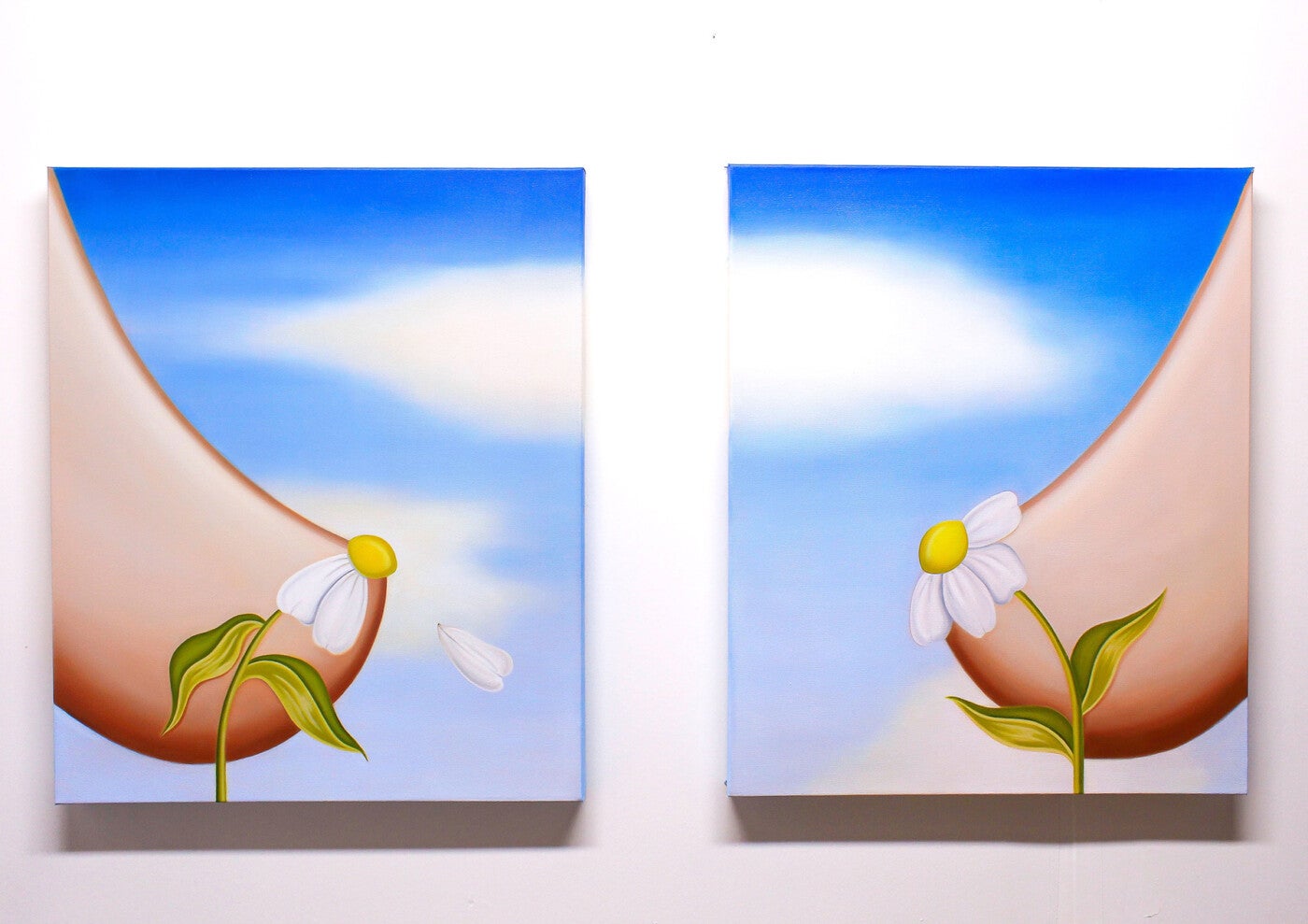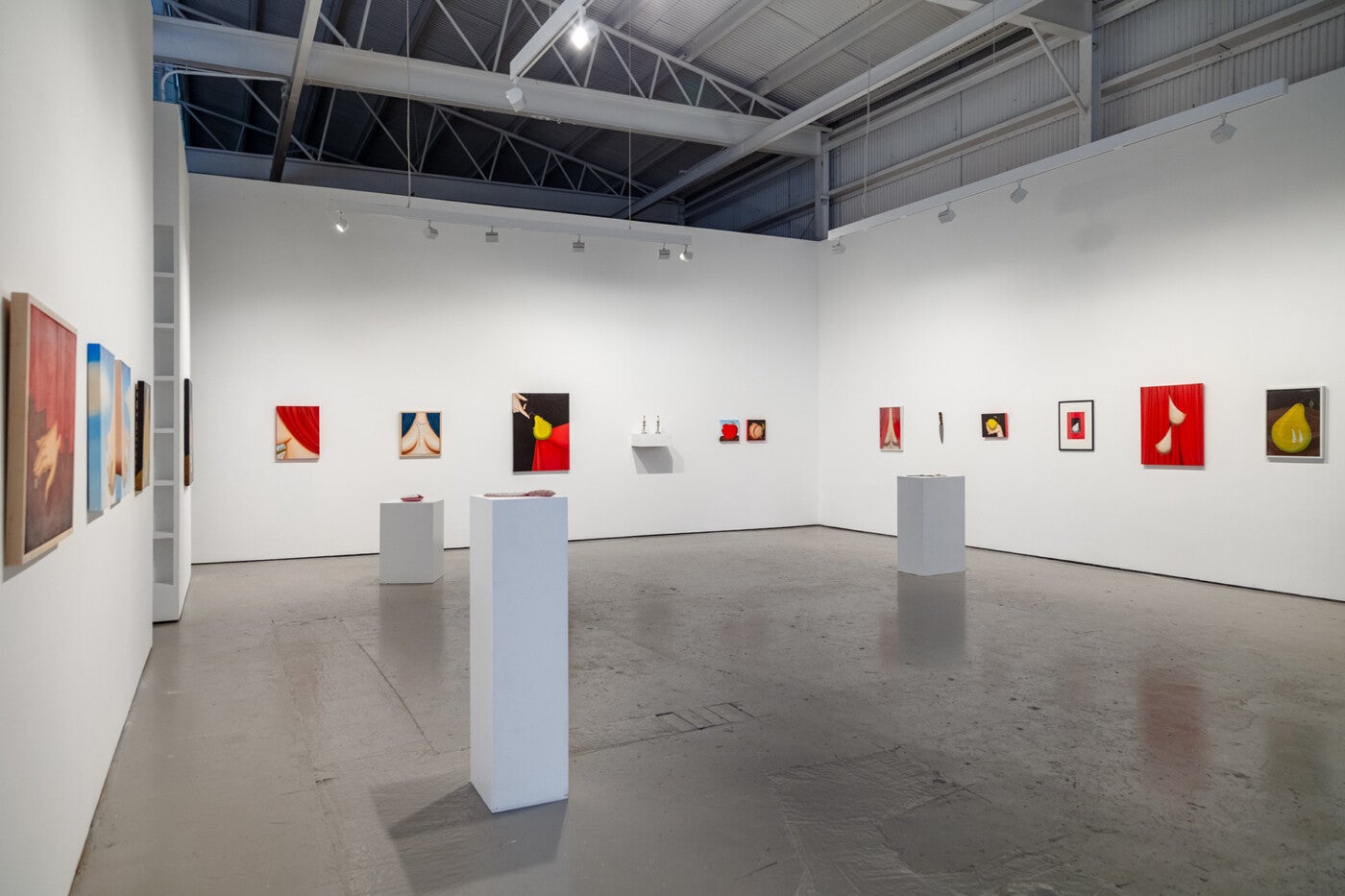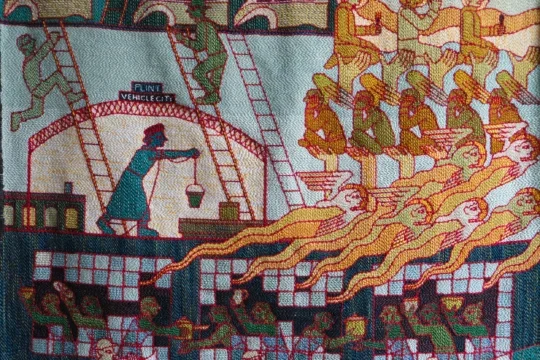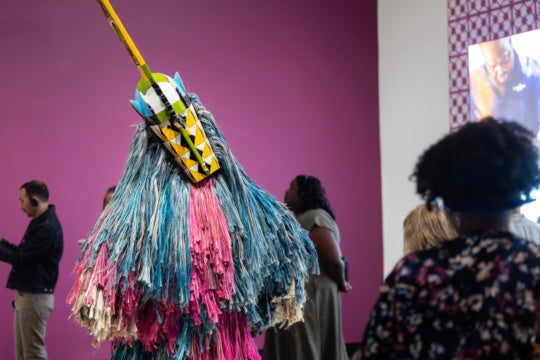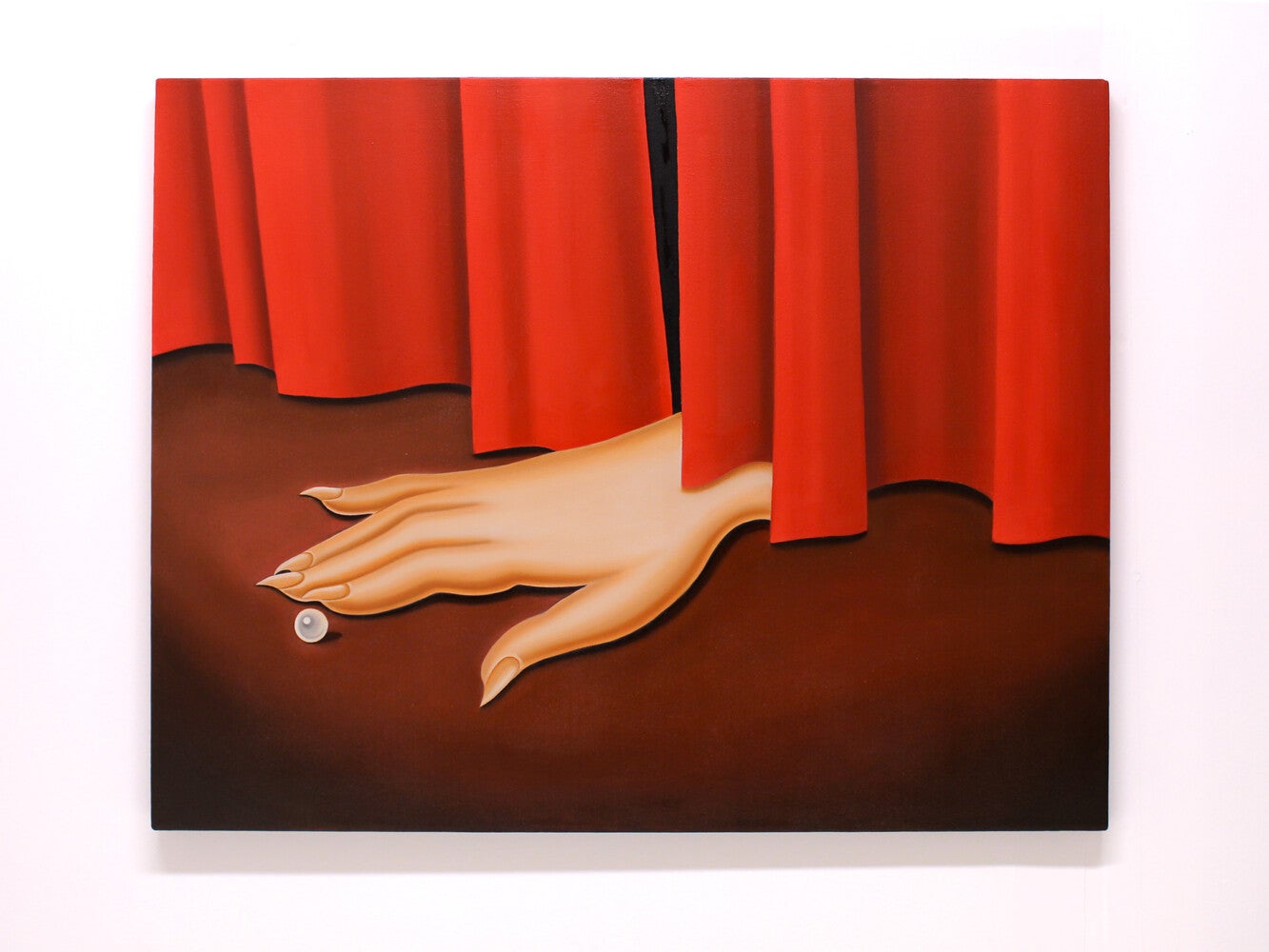
Before Hurricane Helene ravaged western North Carolina, Carly Owens Weiss was gearing up for her debut solo exhibition at Tracey Morgan Gallery in Asheville, NC. Growing up in Swannanoa, about 11 miles east of Asheville, but now living in Boulder, Colorado, her solo exhibition was always set to be a homecoming of sorts. Now, “it still feels like one,” the artist said, “but with a different undertone.”
Opening in mid-November, a little over a month after the storm, the change is hard to ignore. Morgan’s gallery is located in the 22 London building, a large studio and exhibition space owned by artist and collector Randy Shull and his wife, Hedy Fischer. It’s situated on the outskirts of Asheville’s Biltmore Village, one of the neighborhoods that Helene hit hardest. As you drive up the slight incline of London Road, it becomes evident how the gallery managed to survive; however, the damage just steps from the parking lot highlights how close the building came to being washed away.
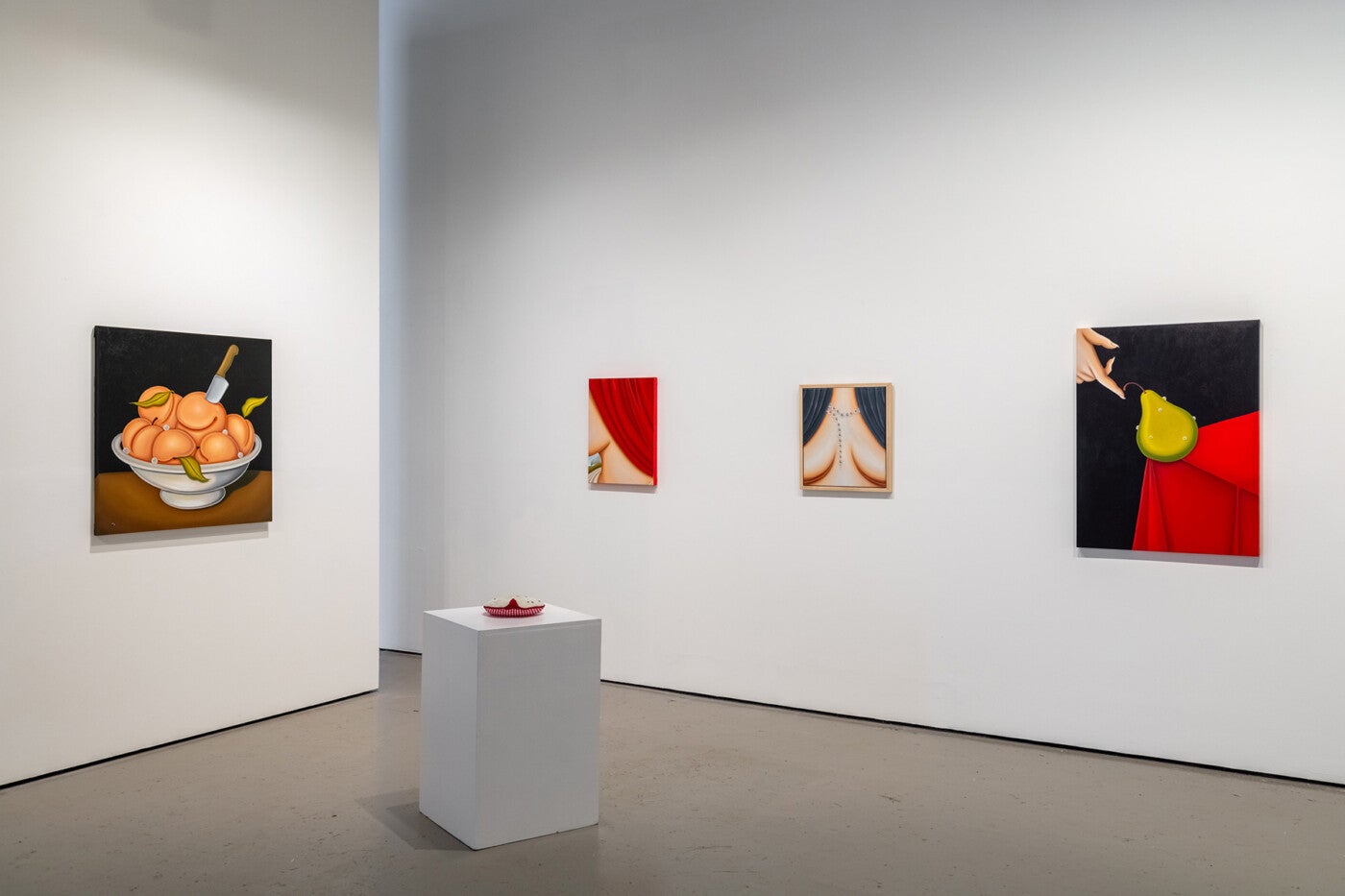
Owens Weiss’s works may not directly address the flood, but they concentrate on another critical set of contemporary issues—women’s bodily autonomy and the traditionalist trends in American culture regarding gender roles and expectations. As the title suggests, her exhibition The Boys Will Get Hungry if They See Fruit primarily focuses on desire and sensuality as forms of agency and power, themes that have gained urgency and prominence in discussions during and following the recent election. Through twenty paintings and several sculptures, Weiss uses antiquity to discuss modern anxieties. Unlike the opulent seventeenth-century Dutch Golden Age paintings that inspired her, Owens Weiss’s works invite interpretation and explore themes of temptation, purity, fertility, and aging through veiled depictions of young white women and reimagined symbols like pearls, flowers, and candles. The pearls are often in precarious positions; in Broken Strand (2024), a string of them falls through the model’s bare cleavage, while in the evocatively named The Sweet Sound of Chaste Words (2024), a single gem is nestled in the model’s ear canal, balancing on her lightly bleeding concha.
Ripening fruits are a recurring subject, too, but in her renderings, the pears, peaches, and apples are dripping wet with sweat and radiate a vibrant, saturated color. No one would confuse these works with scenes from the real world; instead, they feel like a conflation of emojis used when sentences feel hard to string together, the words too hard to say. For instance, a single knife cuts through a plump peach from a bowl full of them in I’ve Adventured It and Found Nothing But Sugar and Violence (2024). In Expulsion (2024), a white hand emerges from a dark void holding a juicy lemon, as if bestowing it to the viewer. Clear droplets trickle from two puncture wounds in the rind, suggesting crying eyes or an oozing bite. Embroidered soft sculptures bring other versions of these metaphors off the canvas and onto the pedestal; Bad Apple (2024) features a limp slice of the fruit flecked with fruit flies, indicating the early stages of rot.
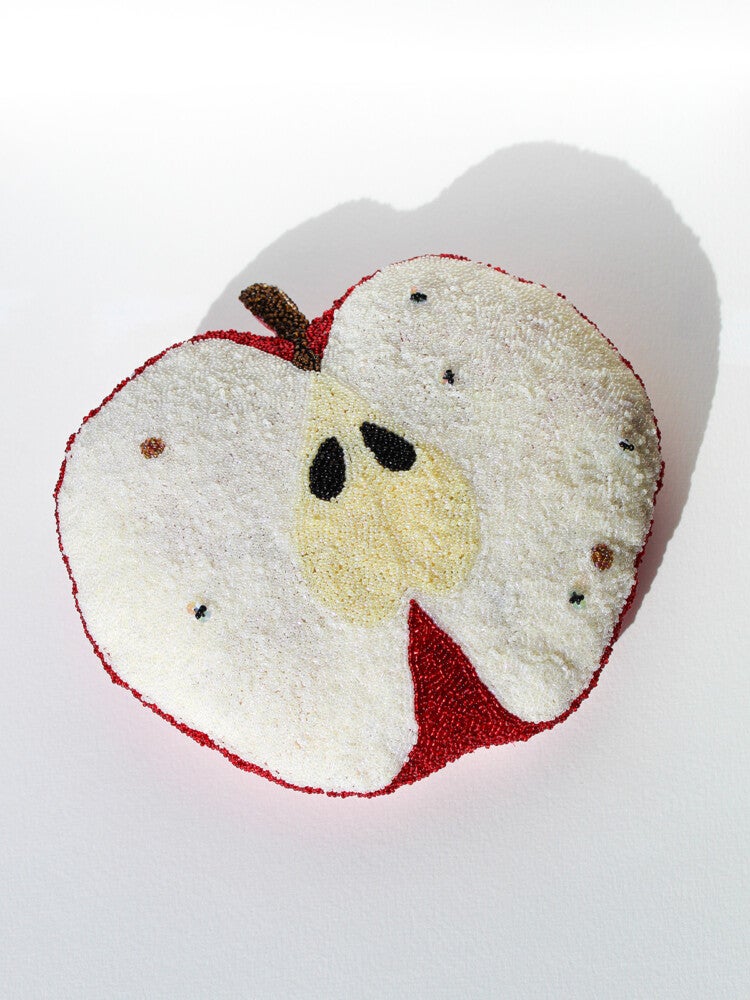
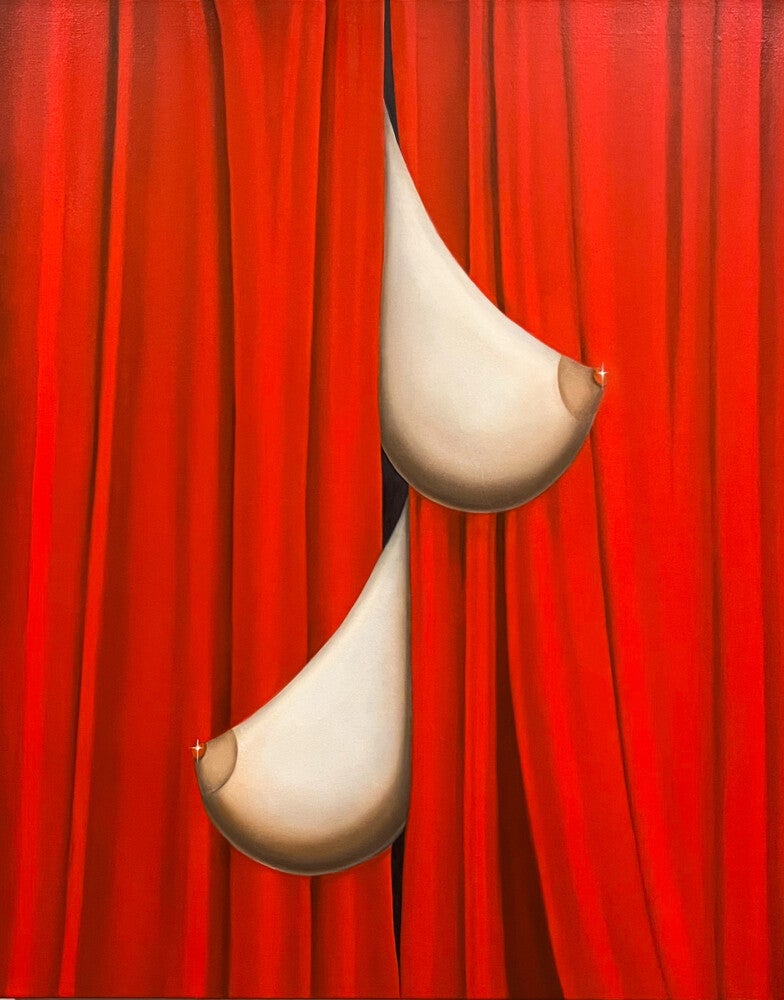
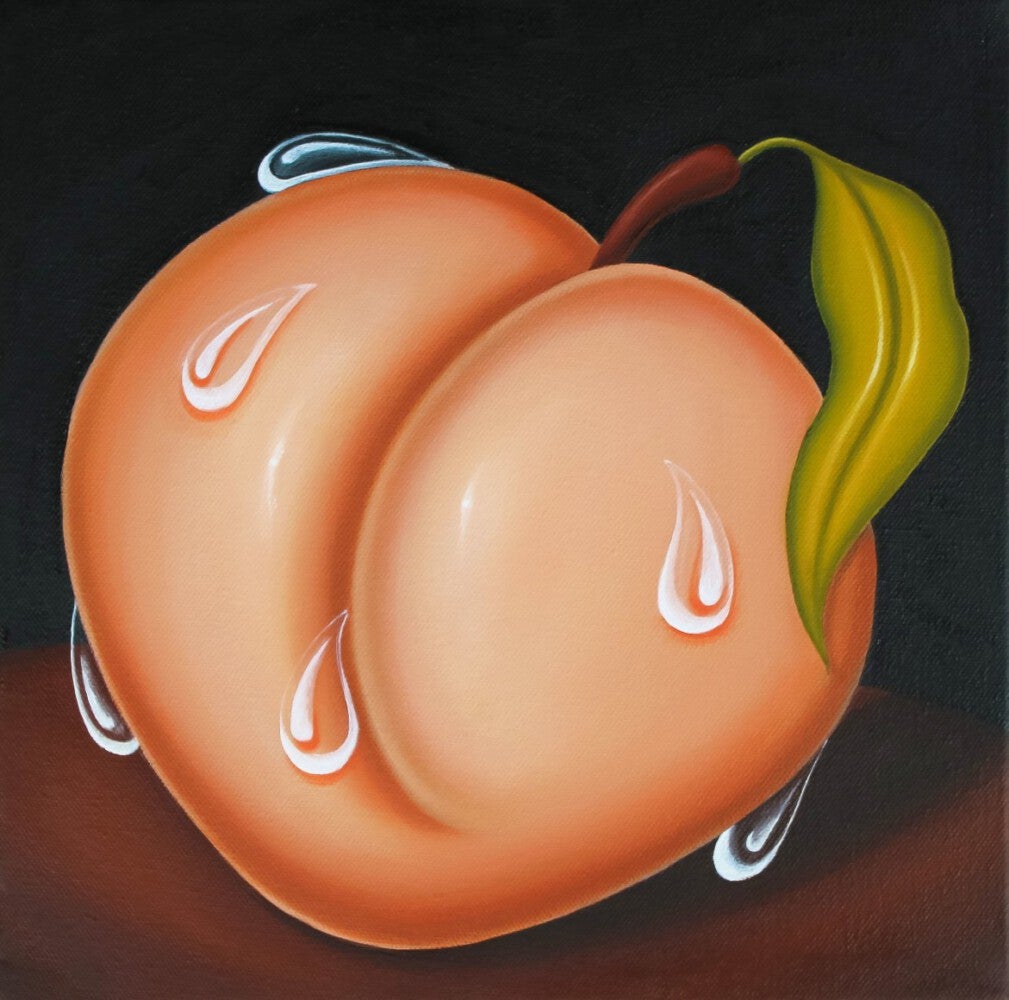
Even the more benevolent paintings seem to ruminate on the push and pull that comes from what one reveals versus what to conceal. The Continual Reflection of Possible Regret (2024) depicts a hand creeping out from under a stage curtain, walking with its fingers, and reaching for a stray pearl. The whole scene is lit by a spotlight, drawing the viewer to an act that is perhaps meant to be private or protected.
The Boys Will Get Hungry if They See Fruit came together after a phase of unbridled productivity and jolts of newfound confidence, primarily inspired by a transformative residency at the Vermont Studio Center last winter. For Owens Weiss, showing for the first time in what’s essentially her hometown feels like the perfect way to cap this cathartic year and celebrate her artistic and personal growth. “This region is where I grew up, really, where I became interested in art,” she said, describing how western North Carolina’s supportive, artistic enclave gave her the courage to lean into her creativity. “Asheville is so open and welcoming to new ideas,” she told me, hopeful that they will be just as welcome to her new body of work, too.
